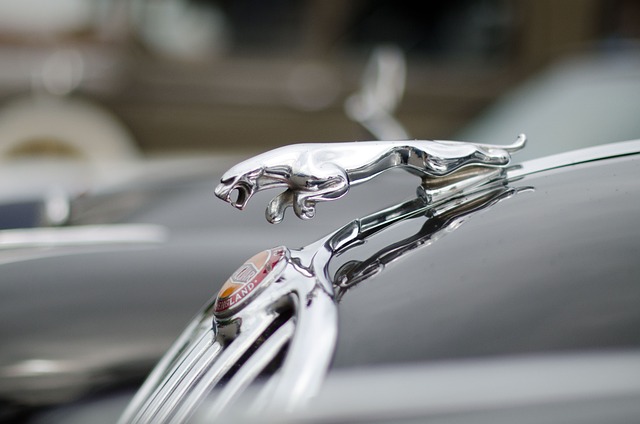Tangible property refers to physical assets that can be touched or seen, such as real estate or vehicles, intangible property encompasses non-physical assets like copyrights, patents, or trademarks.
Tangible property
![]()
Tangible property refers to physical assets that can be touched, seen, and felt. These are the traditional forms of property that we are most familiar with in our daily lives. Think about your home, your car, or even a piece of furniture – these are all examples of tangible property.
One key characteristic of tangible property is its ability to provide utility and functionality. For example, a house provides shelter and a car allows for transportation. Tangible assets often have a practical use or serve a specific purpose in our lives.
Physical ownership is also closely tied to tangible property. When you own something tangible like a house or a car, you can physically possess it and exercise control over its usage as long as you comply with legal regulations.
Intangible property

Intangible property refers to assets that do not have a physical form and cannot be touched or seen. Unlike tangible property, which includes items like houses, cars, and furniture, intangible property consists of rights and interests that are valuable but intangible in nature.
Intangible property also encompasses contractual rights such as licenses, leases, patents for software technology etc., which grant individuals or organizations exclusive use or control over certain resources.
Tangible property Vs. Intangible property – Key differences
Tangible Property:
- Definition: Tangible property refers to physical assets that can be touched, seen, and felt.
- Perceptibility: Tangible property can be perceived through the five senses.
- Physical Existence: Tangible property has a physical existence and occupies space.
- Value: The value of tangible property is derived from its physical characteristics, utility, and market demand.
- Ownership Transfer: Ownership of tangible property can be transferred through a sale, exchange, or transfer of possession.
- Depreciation: Tangible assets can depreciate over time due to wear and tear, obsolescence, or other factors.
- Identification: Tangible property can be easily identified and quantified as it has a physical form.
- Examples: Examples of tangible property include real estate, vehicles, machinery, equipment, furniture, and inventory.
Intangible Property:
- Definition: Intangible property refers to assets that do not have a physical form.
- Perceptibility: Intangible property cannot be perceived through the five senses.
- Physical Existence: Intangible property does not have a physical existence and does not occupy space.
- Value: The value of intangible property is derived from the rights, benefits, or privileges associated with it.
- Ownership Transfer: Ownership of intangible property is usually transferred through legal assignments, licenses, or contracts.
- Depreciation: Intangible assets may not have a fixed lifespan and may not depreciate in the same way as tangible assets.
- Identification: Identifying and quantifying intangible property can be more challenging as it often represents abstract concepts or intellectual property.
- Examples: Examples of intangible property include patents, copyrights, trademarks, brand names, trade secrets, goodwill, software, and licenses.
| Tangible Property | Intangible Property | |
|---|---|---|
| Definition | Physical assets that can be touched or felt. Examples include buildings, vehicles, furniture, and inventory. | Assets that do not have a physical form. They represent ownership or rights and are often based on intellectual or creative work. Examples include patents, copyrights, trademarks, and goodwill. |
| Perceptibility | Can be perceived through the five senses. | Cannot be perceived through the five senses. |
| Physical Existence | Has a physical existence. | Does not have a physical existence. |
| Value | Value is derived from the physical characteristics or utility of the item. | Value is derived from the rights or benefits associated with the item. |
| Ownership Transfer | Ownership can be transferred through a sale, exchange, or transfer of possession. | Ownership is usually transferred through legal assignments, licenses, or contracts. |
| Depreciation | Tangible assets can depreciate over time due to wear and tear or obsolescence. | Intangible assets may not have a fixed lifespan and may not depreciate in the same way as tangible assets. |
| Identification | Can be easily identified and quantified. | May be more difficult to identify and quantify as they are often abstract in nature. |
| Examples | Real estate, vehicles, machinery, inventory, cash. | Patents, copyrights, trademarks, brand names, trade secrets. |
What are examples of an intangible property?
Intellectual Property: This category includes creations of the mind, such as:
- Patents: Exclusive rights granted to inventors for their inventions.
Copyrights: Exclusive rights granted to creators of original works of authorship, such as books, music, films, and software. - Trademarks: Distinctive signs, symbols, or names used to identify and distinguish goods or services.
- Trade Secrets: Confidential and proprietary information that provides a competitive advantage, such as formulas, recipes, processes, or customer lists.
- Industrial Designs: Protection for the aesthetic and visual aspects of a product.
- Brand Names and Logos: The brand names, logos, and slogans associated with companies or products.
Franchise Rights: Rights granted to operate a business under an established brand name and business model.
Goodwill: The reputation, customer loyalty, and positive relationships associated with a business.
Software and Licenses: Non-physical software programs and licenses that grant the right to use or distribute software.
What are examples of a tangible property?
Real Estate: Land and any structures or buildings on it, such as houses, apartments, offices, and factories.
Vehicles: Cars, trucks, motorcycles, buses, airplanes, boats, and other means of transportation.
Machinery and Equipment: Industrial machinery, tools, manufacturing equipment, construction equipment, and agricultural machinery.
Furniture and Fixtures: Chairs, tables, desks, cabinets, shelves, beds, lamps, and other movable items used for furnishing spaces.
Inventory: Physical goods held by businesses for sale or production, including raw materials, finished products, and supplies.
How to protect your intangible property?
- Intellectual Property Rights: Determine if your intangible property is eligible for legal protection, such as patents, copyrights, trademarks, or trade secrets. Seek professional advice to understand the appropriate protection for your assets.
- Registration and Filing: File the necessary applications and registrations to secure your intellectual property rights. This involves submitting applications to relevant authorities and adhering to deadlines and renewal requirements.
- Confidentiality and Non-Disclosure Agreements: Use agreements to protect sensitive information when sharing it with third parties. Confidentiality agreements legally bind recipients to maintain confidentiality and protect trade secrets.
- Contracts and Licensing: Clearly define terms and conditions for the use, distribution, or licensing of your intangible property through contracts and licensing agreements. Specify rights, limitations, and restrictions associated with asset use and transfer.
- Marking and Notice: Use copyright symbols, trademark symbols, or patent numbers to publicly notify ownership and discourage unauthorized use of your intangible assets.
Image Credits
Featured Image By – Katherine Kromberg on Unsplash
Image 1 By – Obi – @pixel7propix on Unsplash
Image 2 By – bruno bissig from Pixabay








